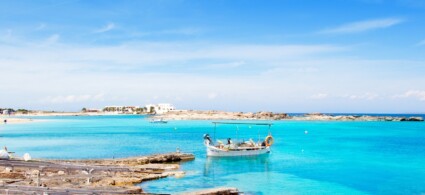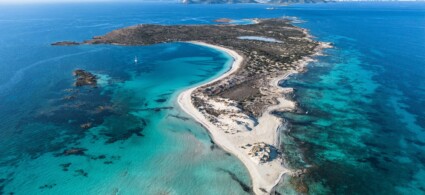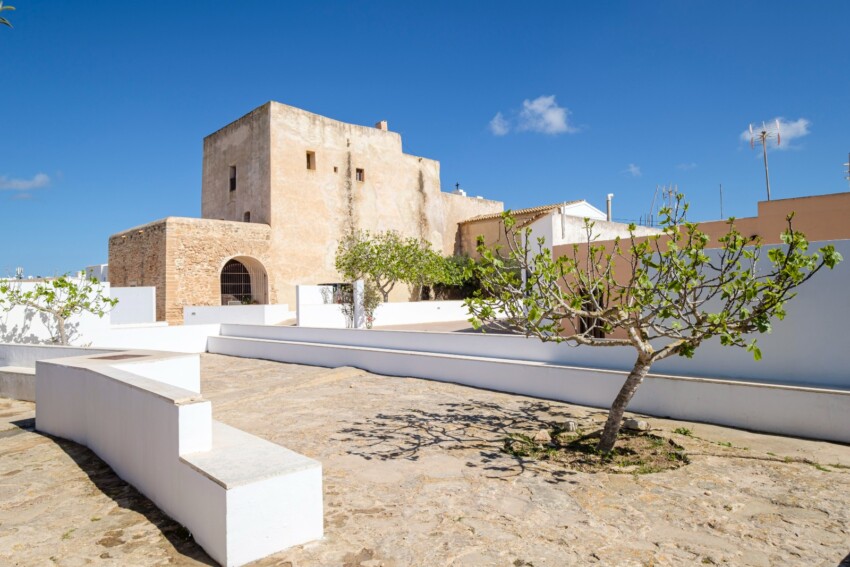

Formentera may be small, but it has plenty to see! Ibiza ‘s little sister is actually a holiday destination for a rather different clientele, not looking for wild parties until dawn so much as beach aperitifs and lounge bars. But between cocktails and beach clubs, it might occur to you to take a break from the sea once in a while, so here is a list of the best things to see in Formentera, to enjoy the island in all its facets.
You can, for example, visit its villages, where seafaring traditions – although subverted by the advent of tourism – still make themselves felt, or take a nature excursion to discover the salt pans and the large salt lake that occupies a large part of the northern part of the island. Lighthouses and mills are reminders of Formentera’s past, while shopping enthusiasts should not miss the hippy market held every Wednesday and Sunday from spring to early autumn.
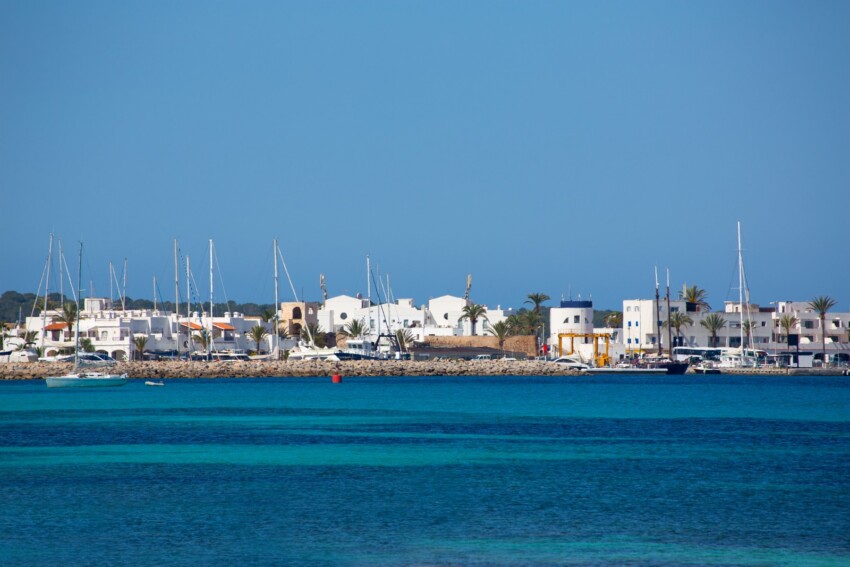
The gateway to paradisiacal Formentera, the small harbour village of La Savina is located in the northern part of the island and has a somewhat exclusive atmosphere thanks to the luxurious yachts that anchor there. The village takes its name from a small island that once stood at the entrance to the harbour and is now joined to the mainland.
La Savina can be a cheaper option for accommodation than the other resorts on the island and provides quick access to the beautiful beaches of Ses Illetes, Es Cavall d’en Borras and Platja de Llevant. Next to La Savina is the salt lake of Estany Pudent.
With its typical character of places of passage, La Savina is the ideal place to pick up a rental car in Formentera as numerous agencies have their offices right in front of the harbour. From the harbour it is also possible to board the regular buses and taxis that connect the island’s main urban centres.
Ferries to and from Ibiza take 30 minutes for the crossing.
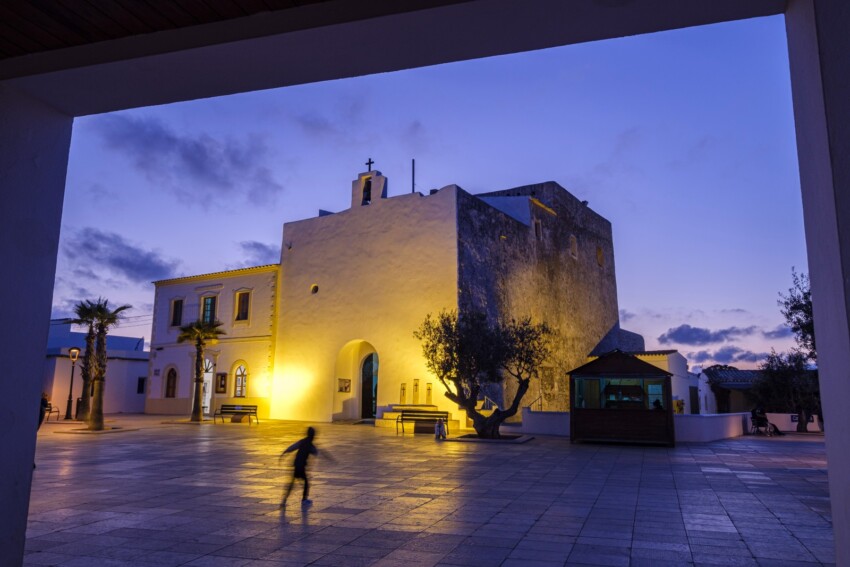
The capital of the island of Formentera is Sant Francesc Xavier, a small town of about 1,000 inhabitants that has made simplicity its greatest attraction.
It is a quaint little town, with whitewashed houses, small squares and cafés where you can relax while sipping a coffee in peace and quiet, and it manages to retain its authentic, unpretentious atmosphere even in the summer months when it fills up with tourists.
The pedestrian area of Carrer Jaume I is full of souvenir shops, craft shops and boutiques. In addition, a very popular hippy market is held in the town in July and August.
The nightlife in Sant Francesc is not one of the liveliest on the island but the town does offer some excellent restaurants and trendy bars where you can spend a cheerful evening.
The town’s only famous monument is the unique windowless church in the main square, originally built in the 18th century to defend the island from pirate attacks and later converted to a place of worship.
The port of La Savina is 3 kilometres away and the beaches of Cala Saona, Es Calo and Es Migjon are easily accessible from Sant Francesc Xavier.

Es Pujols, the beating heart of Formentera, offers a perfect balance between the island’s authenticity and tourist amenities. This charming resort boasts a beautiful white sandy beach bathed by crystal-clear waters, typical of Formentera. Despite being the main tourist centre, Es Pujols retains a relaxed atmosphere and fishing village charm.
Here you will find the widest choice of accommodation on the island, from boutique hotels to holiday flats to suit various budgets. The numerous restaurants serve local and international delicacies, while the beach bars are perfect for watching the sunset. Es Pujols’ nightlife, although not comparable to that of Ibiza, is the liveliest on Formentera, with clubs and bars staying open late.
Its strategic location makes it an ideal base for exploring the island, offering easy connections to other beaches and attractions. Es Pujols is the perfect choice for those seeking an experience that combines relaxation, fun and a chance to immerse themselves in the natural beauty of Formentera.
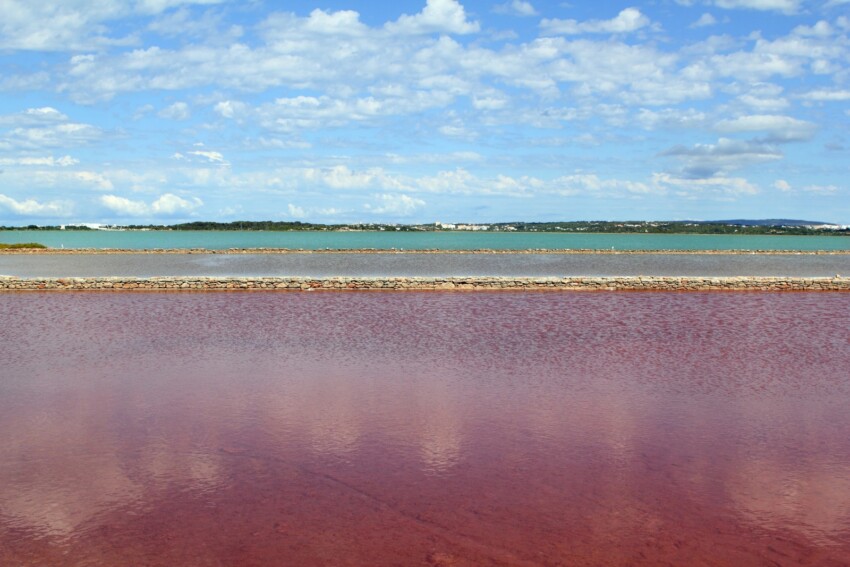
The vast saltwater lake of Estany Pudent is the largest of Formentera’s 2 brackish water lagoons and is located in the northern part of the island behind the beach of Es Cavall d’en Borras, the one closest to the port of La Savina.
With an area of over 3 square kilometres and an average depth of 4 metres, the lagoon is truly a fascinating place. It is possible to stroll along the shores of this inland lake thanks to cycle paths and several trails.
The concentration of salt in Estany Pudent is 3 times higher than in the sea, but in spite of this, this nature reserve is an important natural area where you can observe birds such as the Spotted Redshank, the Flamingo and the Horseman.
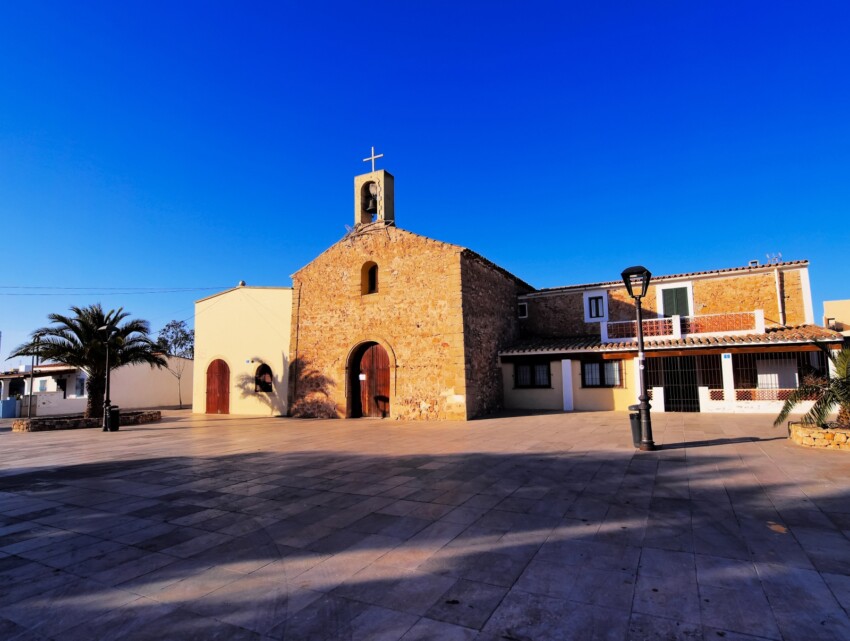
The village of Sant Ferran de ses Roques is located in the centre of the island of Formentera, 2.5 kilometres east of the main town Sant Francisc and 2 kilometres south of Es Pujols, behind the salt lake Estany Pudent.
The centre of the hippy movement in the 1960s, Sant Ferran is still a destination for alternative tourism. A true legend of those years is the Fonda Pepe, a restaurant that is still popular today.
Don’t miss the art market held every day except Wednesdays and Sundays from May to October and the artisan guitar workshop Formentera Guitars has supplied musical instruments to artists of Pink Floyd fame.
Not far from the village is the Cuevas d’en Gironi, a cave inside which stalactites and stalagmites can be admired.
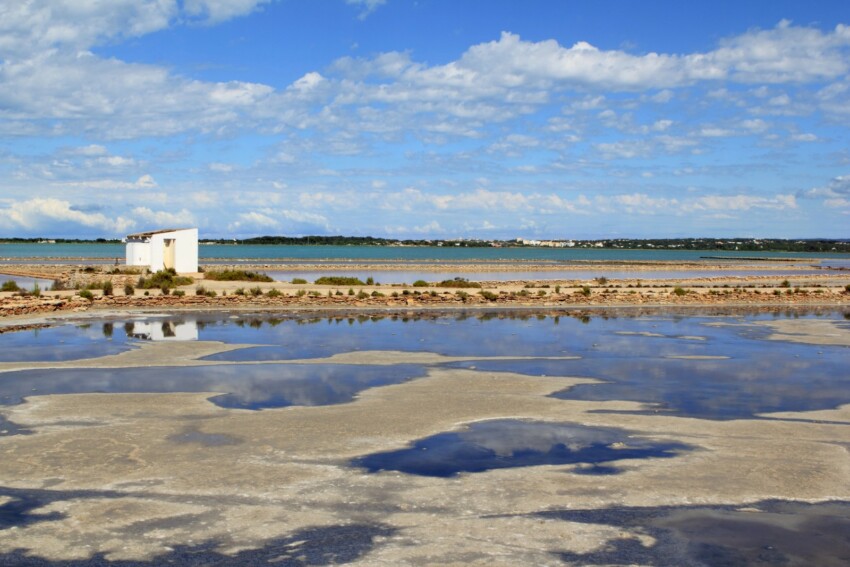
Before the arrival of tourism, the salt industry was the most important activity on the island. Formentera’s salt pans, which are still active today, are a precious testimony to the island’s past and a fascinating tourist attraction. The landscape is truly extraordinary, but also very delicate, which is why the salt pans area was declared a nature reserve in 1995.
They are part of the Parc Natural de Ses Salines d’Eivissa i Formentera, which stretches from the south of Ibiza to the north of Formentera, encompassing the arm of the sea that separates them.
The best time to visit the salt pans is during salt crystallisation, when the pools are tinged with a delicate pink colour, the same as the feathers of the flamingos that come here to feed on the microorganisms in the stagnant waters.
During this period, the play of light created at dawn and dusk is spectacular, to be immortalised during an exciting photo trek. If, on the other hand, you want to admire the depths of this wonderful but extremely fragile natural world, you will have to ask for a permit to dive.
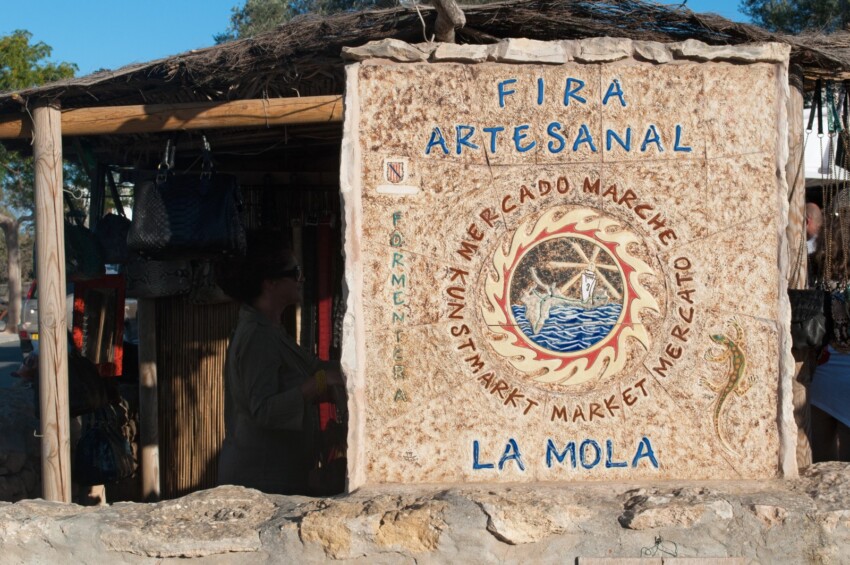
From May until mid-October, shopping in Formentera is more fun, thanks to the numerous handicraft markets that are organised and reserved exclusively for those who sell products made on the island. You can buy clothes, jewellery, leather or glass objects, wicker baskets, espadrilles, paintings and other works of art.
The most famous of these local handicraft fairs is the Mercado Artesano de La Mola, also known as Formentera’s hippy market because decades ago it was hippies who started the tradition of selling handmade objects on Formentera.
Held every Wednesday and Sunday from spring to early autumn, from afternoon until evening, it is not only a place to buy cute and unusual objects, but also a popular meeting place. Live concerts and bars in the surrounding area help to liven up the market atmosphere.
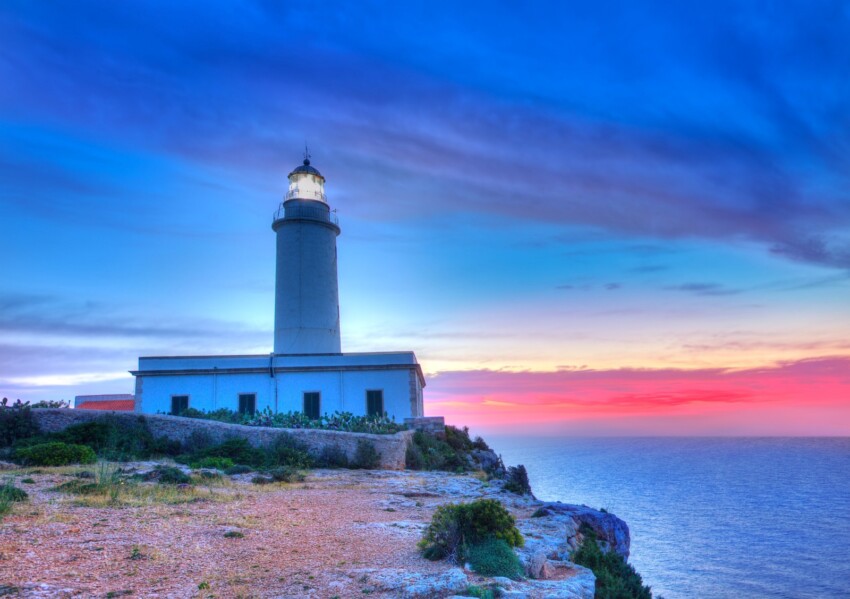
What could be more romantic and atmospheric than a lighthouse? On the island of Formentera you will find no less than three. The oldest and highest is Far de la Mola8, which dominates a cliff more than a hundred metres high.
Its end-of-the-world atmosphere and the breathtaking view from the top of the cliff made the writer Jules Verne fall in love with this place and he mentioned it in his book ‘Hector Servadac (Travels and Adventures through the Solar World)’.
You can reach the lighthouse by car, but it is much more fascinating to get there on foot via a marked path (one of the rutas verde mentioned above) that will take you back in time, past cultivated fields, cattle pastures and a perfectly preserved traditional house.
The other two lighthouses on the island are located at Cap de Barbaria9 (which appears in the film ‘Lucía y el sexo’) and at the port of La Savina10.
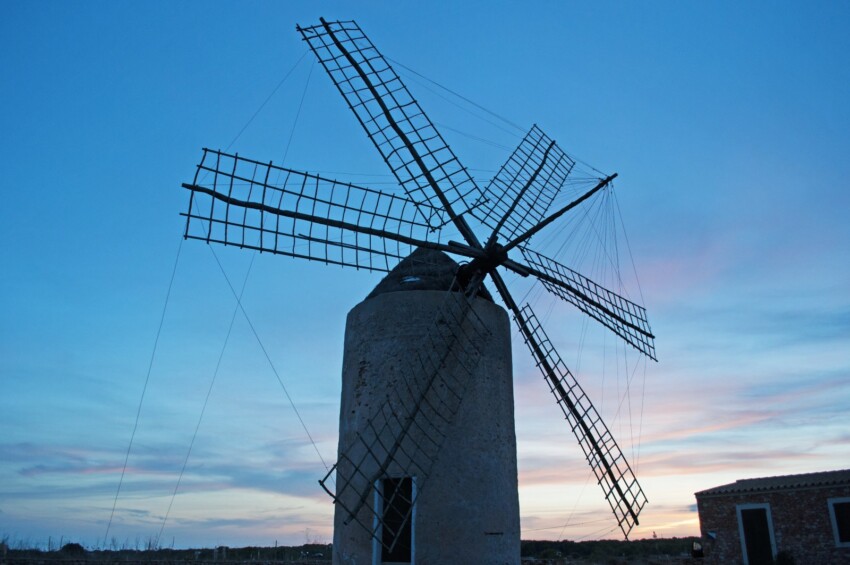
An iconic image of the island of Formentera are its characteristic windmills, which for centuries have towered into the blue sky of the island, breaking the monotony of the countryside. Lonely and nostalgic witnesses to a past when the economy was based on agriculture, these traditional mills with their conical shape and wooden blades are extraordinary photographic subjects.
Formentera’s mills were used exclusively for the transformation of wheat into flour, all with the same three-storey structure, one of which had the machinery dedicated to the production of flour, a middle storey where the flour was collected and the lowest storey serving as a warehouse.
They were built between the end of the 18th century and the end of the following century (five of them can still be visited today): Molì den Mateu, Molì den Gerona, Molì di San Ferran, Molì del Tauet, Molì den Botiga and two near La Mola.
There are some viewpoints in Formentera that are worth visiting to get a beautiful view of the island or some of its beaches from above. The most famous is definitely Es Mirador, or El Mirador in the Spanish variant, which is located along the PM-820 road from Es Calà de Sant Augustì heading east towards El PIlar de la Mola. As you follow the road you will enter a pine forest, the only one in all of Formentera, and as you ascend to the pass you will reach a beautiful viewpoint. Don’t expect to be alone watching the sunset like in the best romantic movies: the place is very popular with tourists, and you will be practically surrounded!
However, it is definitely worth getting up here with a rented car or scooter to enjoy a beautiful view of the southern part of Formentera and its beaches. There is also a restaurant at El Mirador, in case you want to extend your stay for a couple of hours.
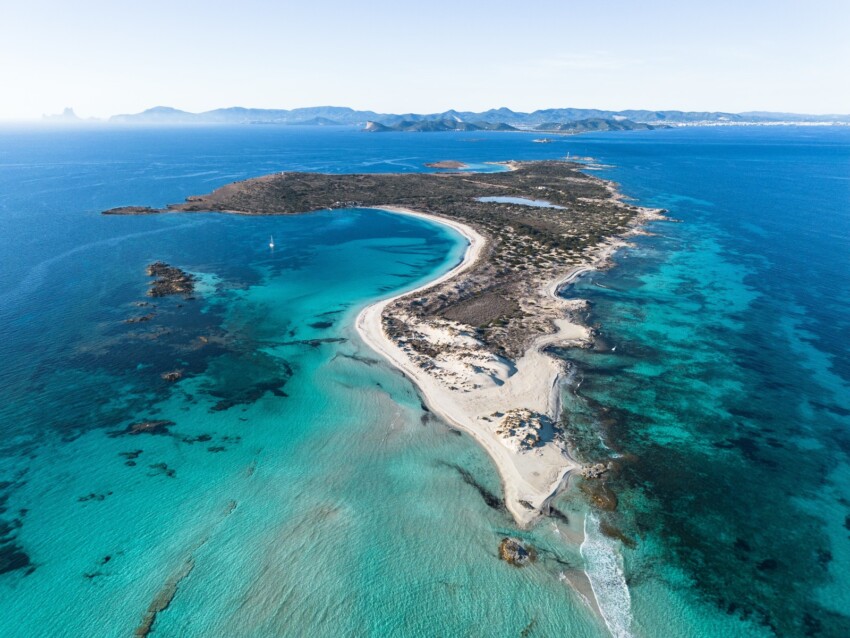
Want even more tranquillity than you can find on peaceful Formentera? Escape to the neighbouring island of Espalmador, so close that were it not for the currents you could swim to it.
Choose the safe option, i.e. arriving by ferry, and enjoy the absolute peace of this uninhabited, undeveloped island with a protected natural area that will delight birdwatchers and lovers of wild natural landscapes in general.
Lovely beaches await you, but remember to bring your own food and drink because there are no bars or restaurants on the island.
In the following map you can see the location of the main places of interest mentioned in this article.
